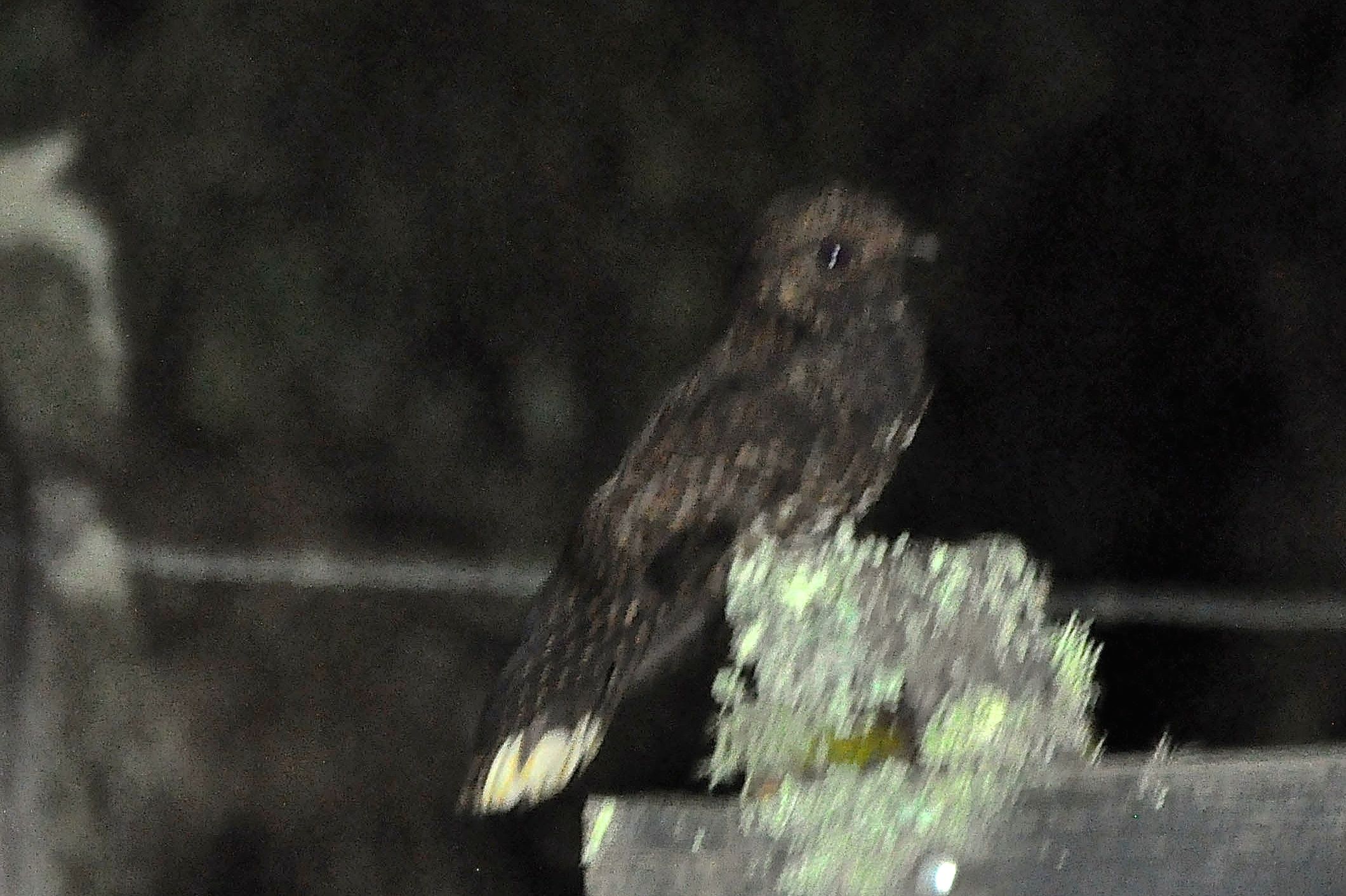Dusky Nightjar on:
[Wikipedia]
[Google]
[Amazon]
The dusky nightjar or dusky whip-poor-will (''Antrostomus saturatus'') is a species of

nightjar
Nightjars are medium-sized nocturnal or crepuscular birds in the family Caprimulgidae and order Caprimulgiformes, characterised by long wings, short legs, and very short bills. They are sometimes called bugeaters, their primary source of food ...
in the family Caprimulgidae. It is found in Costa Rica
Costa Rica, officially the Republic of Costa Rica, is a country in Central America. It borders Nicaragua to the north, the Caribbean Sea to the northeast, Panama to the southeast, and the Pacific Ocean to the southwest, as well as Maritime bo ...
and Panama
Panama, officially the Republic of Panama, is a country in Latin America at the southern end of Central America, bordering South America. It is bordered by Costa Rica to the west, Colombia to the southeast, the Caribbean Sea to the north, and ...
.Chase, J. (2020). Dusky Nightjar (''Antrostomus saturatus''), version 1.0. In Birds of the World (T. S. Schulenberg, Editor). Cornell Lab of Ornithology, Ithaca, NY, USA. https://doi.org/10.2173/bow.dusnig1.01 retrieved October 17, 2021
Taxonomy and systematics
The dusky nightjar was originally described as ''Antrostomus saturatus''; that genus was later merged into ''Caprimulgus'' and later still restored to generic status. It appears to be most closely related to the eastern andMexican whip-poor-will
The Mexican whip-poor-will, (''Antrostomus arizonae''), is a medium-sized nightjar of the southwestern United States, Mexico, and northern Central America.
Taxonomy and systematics
Until 2010 the Mexican whip-poor-will and what is now the eas ...
s (''A. vociferus'' and ''A. arizonae'', respectively). The dusky nightjar is monotypic
In biology, a monotypic taxon is a taxonomic group (taxon) that contains only one immediately subordinate taxon. A monotypic species is one that does not include subspecies or smaller, infraspecific taxa. In the case of genera, the term "unisp ...
.

Description
The dusky nightjar is long. A male weighed and a female . The adult male's upperparts are sooty black with fine reddish cinnamon spots and bars. Much of the face is also reddish cinnamon. The central tail feathers are sooty black with reddish cinnamon bars; the outer three pairs have wide white tips and less barring. The wings are blackish with reddish cinnamon bars. The throat and breast are sooty black with scattered white spots and have a narrow band of white and buff separating them. The belly is cinnamon to buff with narrow black bars. The adult female is similar to the male, but the reddish buff markings are larger giving a more reddish overall appearance. The tips of the outer tail feathers are narrow and buff rather than wide and white. Juveniles are somewhat paler and more reddish than the adults.Distribution and habitat
The dusky nightjar has a wide but scattered distribution through the highlands of Costa Rica. In Panama it occurs only on Volcán Barú inChiriquí Province
Chiriquí () is a province of Panama located on the western coast; it is the second most developed province in the country, after Panamá Province. Its capital is the city of David. It has a total area of 6,490.9 km2, with a population of 47 ...
. In elevation it ranges from . It inhabits the edges and openings of humid montane forest
Montane ecosystems are found on the slopes of mountains. The alpine climate in these regions strongly affects the ecosystem because temperatures lapse rate, fall as elevation increases, causing the ecosystem to stratify. This stratification is ...
rather than its interior.
Behavior
Feeding
The dusky nightjar isnocturnal
Nocturnality is a ethology, behavior in some non-human animals characterized by being active during the night and sleeping during the day. The common adjective is "nocturnal", versus diurnality, diurnal meaning the opposite.
Nocturnal creatur ...
. It forages mostly with sallies from a perch several meters above the ground and rarely from the ground itself. Its prey is flying insects; beetles and moths appear to be the most prevalent items.
Breeding
The dusky nightjar's breeding season appears to span from February or March into April. Only one nest has been described; it was "a small grass-lined depression" among grass and ferns and contained one egg.Vocalization
The male dusky nightjar's song is "a trilled, double-noted whistle ''prurrr prureee'' or ''prurrrr prruwhip''". It is sung mostly during the breeding season, from a perch and rarely from the ground, and may be sung throughout moonlit nights. A flight call is described as "a scratchy ''wheer''."Status
TheIUCN
The International Union for Conservation of Nature (IUCN) is an international organization working in the field of nature conservation and sustainable use of natural resources. Founded in 1948, IUCN has become the global authority on the status ...
has assessed the dusky nightjar as being of Least Concern. Though it has a small range, its estimated population of at least 20,000 mature individuals is believed to be stable. No immediate threats have been identified.
References
{{Taxonbar, from=Q1271526 dusky nightjar Birds of Costa Rica Endemic birds of the Talamancan montane forests dusky nightjar dusky nightjar Taxonomy articles created by Polbot